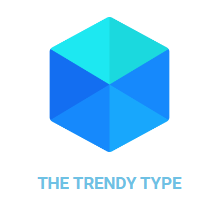The Shifting Sands of News Consumption: Online Takes the Lead
A New Era for Information
Table of Contents
- A New Era for Information
- The Rise of Online Platforms
- Navigating the Future of News
- A New Era of Information Access
- The Rise of User-Generated Content and Its Implications
- The Blurred Lines of Truth
- The Need for Media Literacy
- The Evolving Landscape of Trust in Media
- Building a Foundation of Trust
For over six decades, television reigned supreme as the go-to source for news, a position it inherited from newspapers. However, a seismic shift is underway. According to a recent analysis by the U.K.’s communications regulator Ofcom, online platforms have finally surpassed television as the preferred news source among adults. A staggering 71% of adults now turn to online platforms for their news fix, compared to 70% who rely on television. This marks a pivotal moment in the evolution of news consumption.
This shift isn’t merely about changing viewing habits; it signifies a fundamental transformation in how we access and consume information. While traditional broadcasters enjoyed a monopoly on news delivery for generations, online platforms have democratized the process, allowing a multitude of voices to reach audiences directly. This presents both opportunities and challenges. On one hand, it fosters diversity of perspectives and empowers citizen journalism. On the other hand, it raises concerns about accuracy and the proliferation of misinformation, particularly in light of the growing influence of AI-generated content.
The Rise of Online Platforms
While online news platforms are disrupting the media landscape, they too face competition from newer entrants. Social media giants like Facebook, YouTube, Instagram, and X/Twitter have become major players in the news arena, ranking among the top 10 sources for information according to Ofcom’s survey. This highlights the evolving nature of news consumption, where traditional boundaries are blurring and audiences are increasingly turning to diverse platforms for their daily dose of information.
 Navigating the Future of News
Navigating the Future of News
This evolving media landscape presents both opportunities and challenges for news organizations. To thrive in this new era, they must adapt to changing consumption patterns, embrace digital platforms, and prioritize accuracy and transparency. Consumers, too, have a role to play by critically evaluating information sources, fostering media literacy, and supporting quality journalism.
The future of news is undoubtedly online, but it’s not simply about the format. It’s about how we engage with information, who shapes our understanding of the world, and how we ensure a future where reliable, trustworthy news remains accessible to all.
The Shifting Landscape of News Consumption: TikTok Takes Center Stage
A New Era of Information Access
In today’s digital age, the way we consume news is rapidly evolving. While traditional media outlets like television and newspapers still hold sway, platforms like Facebook, YouTube, and even TikTok are increasingly becoming go-to sources for information. This shift has sparked both excitement and concern, as users grapple with the implications of a more decentralized and potentially less reliable news ecosystem.
A recent study by Ofcom revealed that a staggering 30% of UK adults rely on Facebook for news, placing it on par with popular broadcaster ITV. YouTube, owned by Google, has also seen a surge in popularity as a news source, with its share jumping by 12 percentage points to 19%. This trend aligns with similar findings in the US, where Pew Research found that nearly half of TikTok users under 30 turn to the platform for political and news content.
While Facebook and YouTube remain dominant forces, a new contender has emerged: TikTok. Although it didn’t crack the top 10 in the UK study, its influence is undeniable. A remarkable 11% of adults now cite TikTok as a source for news, a figure that skyrocketed from just 1% in 2020. This rapid growth is particularly pronounced among younger demographics. A staggering 30% of individuals aged 12 to 15 consider TikTok their primary source of news, with 12% relying on it as their essential source of information.
The Rise of User-Generated Content and Its Implications
The Blurred Lines of Truth
This shift towards user-generated content presents both opportunities and challenges. While it empowers individuals to share their perspectives and experiences, it also raises concerns about the spread of misinformation and the erosion of trust in traditional news sources.
During the recent UK General Election, Ofcom reported that 60% of respondents recalled encountering false or misleading information online, with 10% stating they witnessed such content multiple times daily. This highlights the urgent need for media literacy and critical thinking skills to navigate the increasingly complex information landscape.
The Need for Media Literacy
As news consumption evolves, it is crucial to equip individuals with the tools they need to discern credible information from falsehoods. Promoting media literacy education can empower users to critically evaluate sources, identify biases, and verify information before sharing it.
Platforms like TikTok also have a responsibility to address the spread of misinformation on their platforms. Implementing robust fact-checking mechanisms, promoting trusted news sources, and educating users about potential biases are essential steps in mitigating the risks associated with user-generated content.
The Evolving Landscape of Trust in Media
In today’s digital age, trust is a precious commodity, especially when it comes to information. A recent survey revealed that a staggering 27% of individuals have already encountered misinformation or fake news online. This highlights the growing concern surrounding the credibility and reliability of media sources.
While traditional platforms like television, newspapers, and radio still hold significant influence, they face an uphill battle in regaining public trust. A key challenge lies in ensuring that information dissemination doesn’t devolve into a “race to the bottom,” where sensationalism and clickbait tactics overshadow accuracy and integrity.

Picture Credit: Ofcom
Building a Foundation of Trust
To rebuild trust in media, several key steps must be taken. Firstly, it’s crucial to promote transparency and accountability. Media organizations should clearly identify their sources, disclose any potential biases, and be open to correcting errors. Secondly, fostering media literacy among the public is essential. Individuals need to develop critical thinking skills to evaluate information sources, recognize bias, and discern fact from fiction.
Furthermore, supporting independent journalism and investigative reporting is vital. These outlets often play a crucial role in holding power accountable and exposing wrongdoing. encouraging open dialogue and constructive conversations about media ethics can help create a more informed and engaged public.


